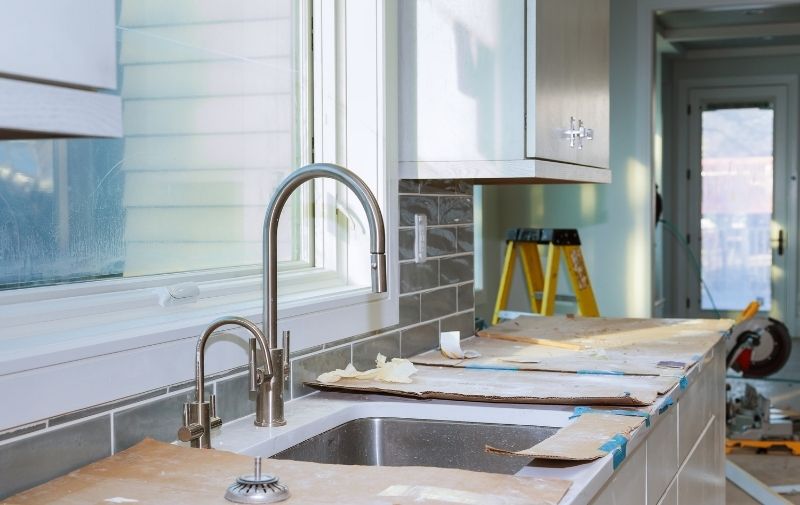Do you know what type of grout to use for your tile installation? If you have no idea whatsoever, this post is perfect for you.
An impeccable tile placement requires that you’ve perfected everything that needs to be considered when it comes to your choice of grout. It’s impossible to come up with a splendid tile installation without figuring out your grout options carefully. All bespoke tile installations on backsplashes, bathroom surfaces, and floors require perfect grout placement.

What are grouts for?
But what are grouts in the first place? Grout is necessary if you want your tile installation to be polished and durable. This is because it is the very material that fills all the gaps on your floor, backsplash, or shower installation. It is usually made of the following:
- cement
- color pigment
- water
- sand
Grout is used to prevent moisture or debris from going beneath your tiles. It also effectively prevents tile edges from being damaged. With the proper grout choice, you can also:
- increase the slip resistance of your floor
- increase the slip resistance of any given surface
- increase the safety of your tiled showers
- increase the safety of your bathroom floors
The two most important things to decide on when choosing a grout is: its type and color. Read on for expert tips on both matters.

Two Types of Tile Grout that You Should Use
There are two basic types of grout when tiling:
1. Sanded
2. Unsanded
Sand is used as the basis for determining grout type because it is the very material that gives grout its stability. However, delicate tiles may get damaged if you use sandy grout. This is why you need to particularly know the kind of tiles you’d be using in order to intelligently choose the kind of grout to use.
Unsanded grout is perfect for stone tiles like marble. It’s also ideal for tiles with narrow joints that measure 1/8 inch wide or less.
Sanded grout is best for tiles with joints wider than 1/8 inch. If you want to boost the flexibility of your grout, you can use polymer additives.
When using both types of sand, it’s best to keep your grout sealed to have it protected from fading, stains, and dirt.
Tips on Choosing Grout Color

When choosing a grout color, design experts want you to take note of the following:
- the most popular tile colors come in earthy and neutral tones
- popular vibrant hues are as follows: pink, green, and blue
- if you want a smooth overall look, choose a grout color that matches your tiles
- if you want your tiles to pop, choose a grout color that will give solid contrast
- light gray grout always works well with white-colored tiles
- sandy-colored grout always matches with neutral or brown tiles
- if you want your grout to hide stains and dirt, opt for dark grout color
Tips on Regrouting
Regrouting is the process of replacing old grout with new grout. Regrouting becomes necessary if you want to freshen up grout on your old tiles. This is because new grout does not stick well on old grout. To fully freshen up the look of your tiles, you need to have your old grout fully replaced.
If you’re not familiar with regrouting, we highly recommend that you work with professionals. This is because the process will require you to use a high-speed angle grinder for the removal of old grout. This is not something that regular households often have. To remove the need to buy or rent one, you could simply choose to work with professionals. They could do the job in just hours and you won’t have to worry at all when it comes to needed equipment and material.
Regrouting is a tricky task because if you’re not careful and experienced enough, you can end up cutting your tile in the process. A high-speed angle grinder is a dangerous gadget so it’s best if you could just hire experienced professionals to do the work for you.

PRO TIP: How to determine the amount of grout you need?
When determining the amount of grout you will need, you’d have to get hold of the following information:
- the type of grout that you’d use
- the brand of the grout
You should always consult the grout’s packaging before beginning anything. It is where you’ll find the grout’s mixing instructions. The instruction would also disclose the square feet that you will cover. Take note of the following:
- you will need more grout if you will be working with small tiles (this is the case because you will have more gaps to fill)
- you can say that your grout is properly mixed already when it has the consistency of soft butter but is a bit stiffer
- you should follow the amount of time that your grout needs to sit as this will allow for proper chemical bonding to take place
- do not begin anything without ensuring that all tools and surfaces are properly cleaned
If you don’t have the time to spare for your tile installation and you want the best possible grout for your project, it would be best if you’d consult with professional tile installers. We do not recommend DIY-ing your way around your tile project if you have no experience whatsoever as you may end up having to re-do all and asking for professional help. Only embark on a tiling DIY if you are fully equipped and knowledgeable.






















Leave a Reply